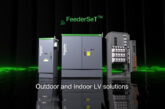
The 18th Edition of the IET Wiring Regulations contains some important changes to the requirements and test standards for surge protection. Samad Khan, Global Product and Standardisation Manager for Furse, explains the reasoning behind the changes and what to do about them.
Why are the requirements and test standards for surge protection changing?
There are two major trends that have driven the incoming changes to the surge protection regulations.
First, society is growing more dependent on electronics to manage everyday activities. This ranges from process control and automation technologies in industry, through business and commercial systems to personal computing devices and smartphones.
Not only are electronics more common, but they are also getting smaller. This makes individual components more vulnerable to damage from electrical surges. As a result, the number of applications and the technical requirements for surge protection devices (SPDs) are scaling up.
The second major trend is the shift towards renewable energy. Efficient operation of solar photovoltaic and wind generation relies on electronic components in inverters, converters and condition monitoring systems. However, because solar and wind farms are often located on rooftops or isolated hilltops, such installations can be a route to earth for lightning. Therefore, there is a growing need for SPDs in renewable energy generating plant.
What are electrical surges?
Electrical surges are also known as transient overvoltages and can affect power, signal and telecommunications systems by overloading components, leading to failure. Surges arise from lightning or from the switching of large electrical loads connected elsewhere on the network.
Lightning strikes are the source of the largest overvoltages, whether direct or up to a kilometre away from the structure. In electrical installations, lightning surges can reach 6,000V and last less than a millisecond.
While switching transients are much smaller, they are more frequent and can be a source of constant stress for electronic components, leading to tripping of RCDs, unplanned outages and premature failure.
The result of either type of surge is the “four Ds” of disruption, degradation, damage and downtime. Ultimately, the cost to business from these is lost productivity, staff overtime, product spoilage and delays.
What changes can we expect to see in the 18th Edition?
Surge protection is covered in Chapter 44 of the IET Wiring Regulations (BS 7671) and the 18th Edition will contain some important changes.
Previous editions used a system known as the “AQ criteria” to determine the requirements for protection against transient overvoltages. The AQ criteria takes account of external environmental conditions that influence lightning in the atmosphere – but is has been removed from the 18th Edition.
Instead, contractors will need to install SPDs to protect against transient overvoltages in situations where there may be serious consequences. These are listed as loss of life or serious injury, interruption to public services, interruption of commercial activity, damage to cultural heritage, or impact on sites with large numbers of people.
At all other sites (apart from single dwellings in some situations) a simplified risk assessment will determine the need for SPDs.
Unsurprisingly, the requirements are greater for high risk sites such as nuclear or chemical facilities. These require a full risk assessment, as detailed in the BS EN 62305 standard for protection against lightning.
Throughout the 18th Edition of the IET Wiring Regulations, SPDs are required to comply with BS EN 62305 if there is a risk of a direct lightning strike to a structure or to the overhead lines connected with the structure.
Will BS EN/IEC 62305 also be updated?
The International Electrotechnical Committee (IEC) is planning to issue the third edition of the international IEC 62305 standard before the end of 2018. CENELEC (the European Committee for Electrotechnical Standardisation) will then review the IEC’s updates and amend them to suit the markets in UK and Europe.
How should electrical contractors change their approach to SPDs?
The incoming regulations mean that SPDs will be required for many installations in commercial, public, industrial and housing schemes. It is important to use SPDs that meet the latest safety and technical standards to ensure that they will offer the right level of protection against repeated “worst case” overvoltages.
There are three Types of power SPD on the market (Types 1, 2 and 3), each of which can handle different types of surge current.
Type 1 SPDs are designed for installation at a facility’s service entrance. They are also known as equipotential bonding SPDs and are designed to protect against major surges that arise from a direct lightning strike. Without a Type 1 SPD, transient overvoltages can exceed the impulse ratings of equipment or cable insulation and this can lead to dangerous sparking – therefore Type 1 SPDs protect against loss of life and serious injury. However, they do not provide protection against switching transients for sensitive electrical and electronic systems.
Therefore, Type 2 and 3 SPDs are also required to protect the electrical and electronic systems. These SPDs will further reduce the size of transient overvoltages to safe levels, with Type 2 SPDs providing protection for fixed equipment and Type 3 SPDs being designed to protect sensitive or critical loads, particularly from switching transients.
Together, the three Types form a co-ordinated SPD set but it’s worth being aware that there are also Combined Type SPDs. These combine multiple Types in a single unit (for example Type 1+2+3), which can simplify installation and maintenance and save cost.
The many options for SPDs by type and application can make selecting the right products seem daunting – so Furse publishes guidance on its website to cover SPDs for power, signal and telecoms lines.
For more information on the range of SPDs available from Furse visit: http://new.abb.com/low-voltage/products/earthing-lightning-protection/furse











